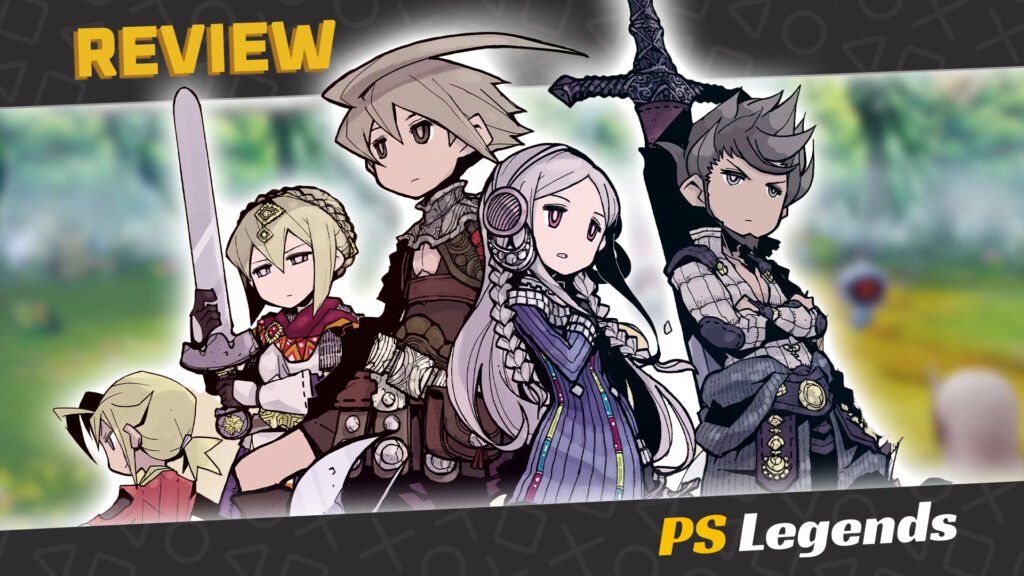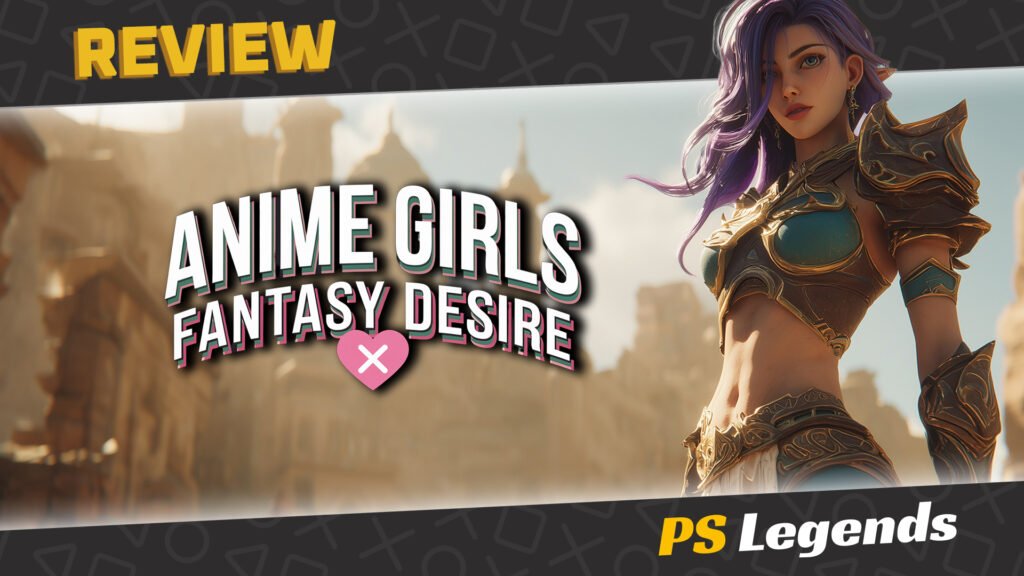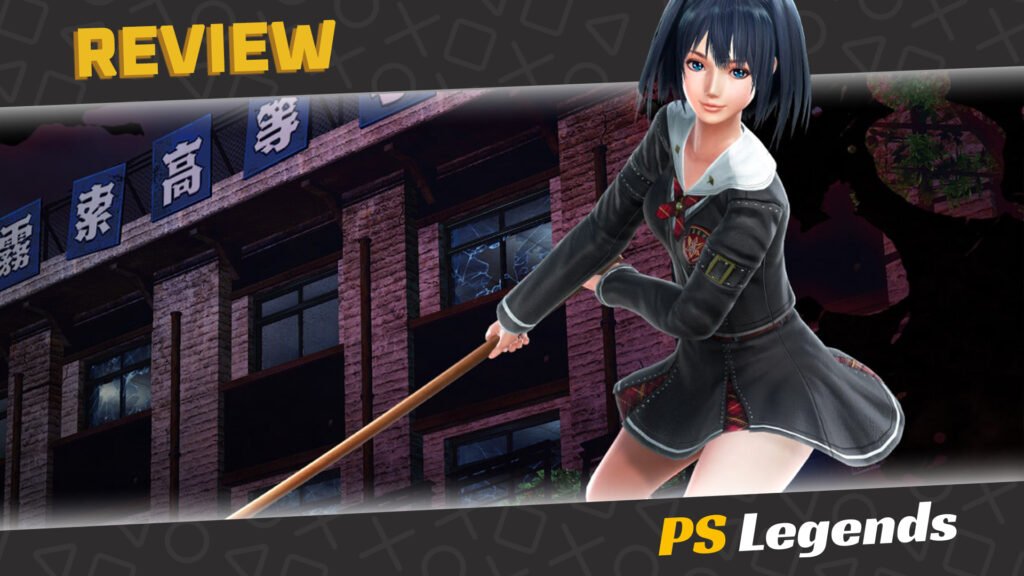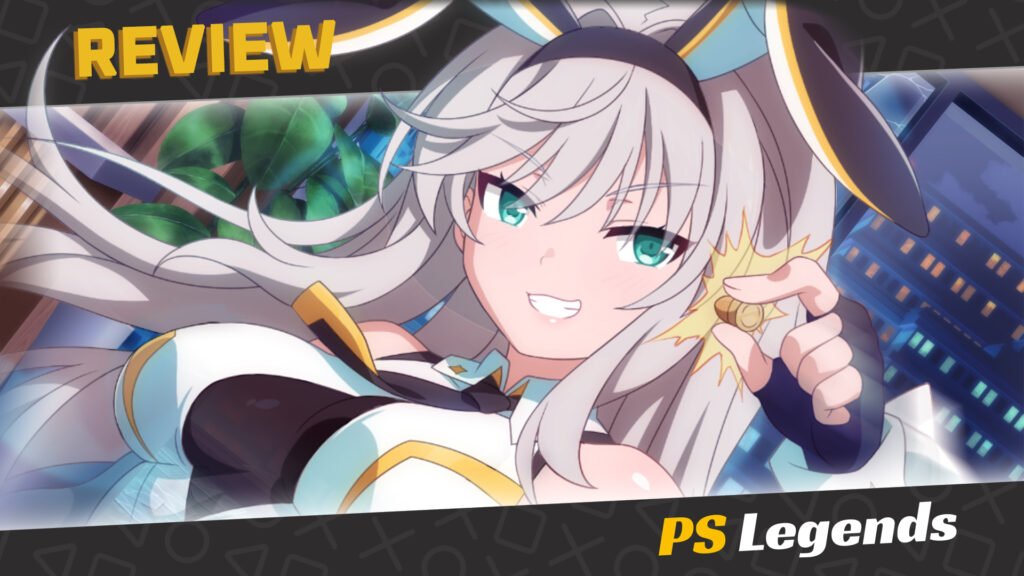I promise I’ll get around to playing The Alliance Alive one day. It’s in my queue. I’ll get to it eventually. Perhaps this surprise re-release of its spiritual predecessor, Legend of Legacy, will give me some encouragement to bump it up my priority list. I do have concerns though; you see, Legend of Legacy was criticised for its high difficulty, something that progressionists like myself tend to frown upon.
Despite some small amount of praise, 2015/16 JRPG The Legend of Legacy appearing exclusively on a rival handheld console didn’t do it any favors with PlayStation players. Still, all things come to those who wait, and like spiritual successor The Alliance Alive, The Legend of Legacy has now received the big-screen HD makeover treatment. Has it discovered a new home on PlayStation, and more importantly, was it worth the wait?

Introduction
The Legend of Legacy HD Remastered is releasing worldwide on March 22nd, 2024, for both PS4 and PS5. Multiple industry and genre veterans were involved in the original development staff, including director Masataka Matsuura, designer Kyoji Koizumi, promotional artist Tomomi Kobayashi, writer Masato Kato, and composer Masashi Hamauzu. The game was chosen for localisation by Atlus USA due to its positive impression on their staff and their previous relationship with developer FuRyu.
The core development team would use ideas from the concept stages of The Legend of Legacy to develop The Alliance Alive and its own respective HD remaster. Rounding out the game’s collective of varied developers and publishers is NIS America, who handled the release of European version of the game and today’s featured remaster.
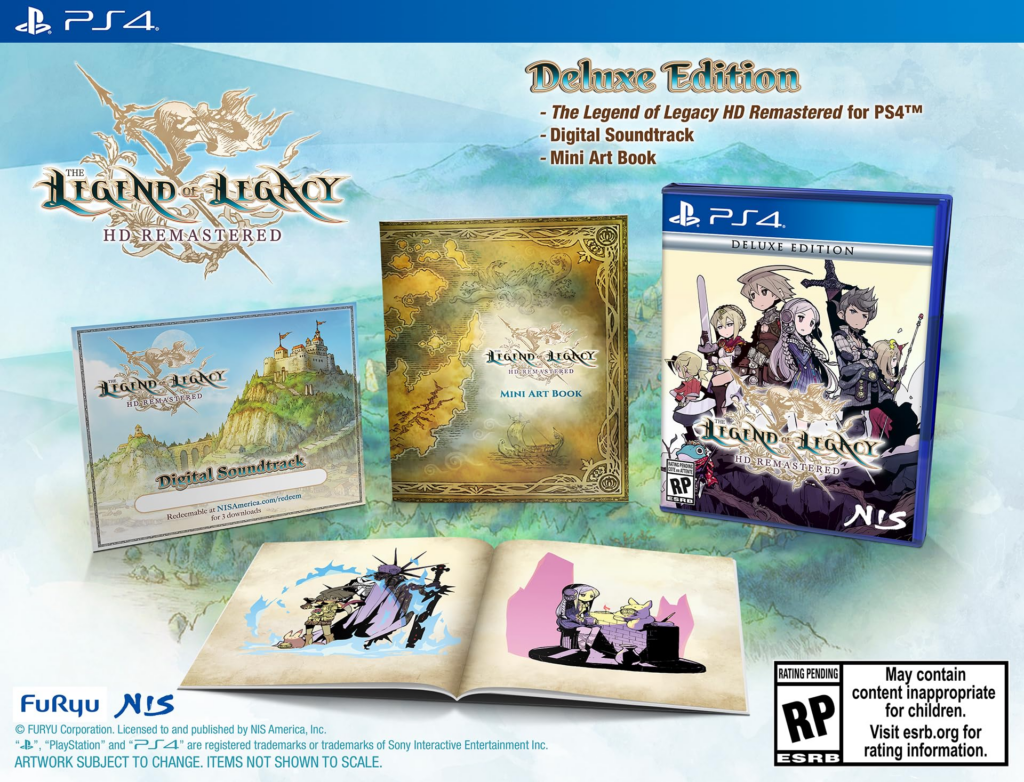
Story
Surprisingly, The Legend of Legacy is not a narrative-driven experience, which makes it very easy to keep this spoiler free. The first hour of the game will lay the foundation for the rest of the 50+ hours to be completed as directed by the player, in more of an exploratory fashion. The Legend of Legacy takes place entirely on the island of Avalon, which re-emerged from the ocean ten years before the game’s opening.
The island has been described, identified, and rejected as being the legendary lost continent/world of Avalon which featured in Arthurian Legend, whose inhabitants were allegedly the descendants of gods. The island, now largely reclaimed by nature and overrun by monsters, houses ruins crafted with the assistance of natural spirits dubbed ‘Elementals’, and ancient stones which detail the island’s past when activated.
A sought-after legendary artifact of Avalon is the Star Graal, which is said to grant immortality to its possessor, and prompts dozens of adventurers to travel across Avalon in search of it. The only populated town on Avalon is Initium, founded by the King of Adventurers, the very man who discovered the island ten years before.
Each of the seven playable characters come to Avalon with different objectives, making their base of operations on the town of Initium. Meurs is the last Elementalist, a person with the power to communicate with Elementals, who summon him to the island in distress. Bianca is an amnesiac who wakes up on Avalon only remembering her name and searches for clues about her identity. Liber is lured to Avalon with the promise of adventure and treasure, particularly the Star Graal.
Garnet is a Templar in service to the Holy Order who seeks to disprove and discredit the island as the rumoured a land of the gods. Eloise is a sultry alchemist pursuing the secret of eternal life connected to the Star Graal. Owen is a famous mercenary who will take any job if the price is right, even working with the Templars to support Garnet. Filmia, the only native of Avalon, is a frog prince who seeks his lost kingdom. At the request of the King of Adventurers, the seven begin mapping the uncharted regions of Avalon while also following their own respective agendas.

Gameplay
The Legend of Legacy is a classic turn-based role-playing game in which players take control of seven different characters as they explore the largely uncharted island of Avalon. Each scenario begins with three pre-set characters, the rest can soon be recruited but will only gain stat increases if they are in the active party. Your chosen protagonist operates from the town of Initium, exploring areas of Avalon after being provided with a blank map. Walking around areas automatically completes the map, step by step.
During your orienteering, the party can also explore dungeons and find treasure chests both above ground and in dungeons containing items and currency. Once each region is explored, your completed map can be turned in for some quick cash and replaced with a new blank map and new corresponding area to explore. Completing maps or buying them within Initium slowly progresses the game’s narrative. The player can save both at specific locations and create a quick-save at any point during the game.
Each area will have a dominant Element which the player can utilise to their advantage. For example, we trust in the Element of water, we can freeze lakes to make our way to the other side. Creating wind lifts will also be useful to reach previously unreachable areas. On many occasions, we can change the influence of an Element in an area to have an advantage over the enemies of the opposite Element.
Initium acts as a home-hub for the party, where they can buy and sell equipment and maps, and talk with non-playable characters to learn narrative and tactical information. The player can hire ships to trade with other cities, bringing in profits and items. Larger ship types take longer to return from trips but have a higher chance of bringing rarer items. Completing the game allows players access to a New Game Plus option, carrying over character statistics and money, while making higher-tier weapons available from the start.

During exploration, enemies will appear as generic black silhouettes within the environment which can be avoided or engaged and will pursue the protagonist if spotted. Battles use a turn-based battle system within a themed arena, with both player and enemy parties being arranged on a grid in formations. Each formation has a selection of stances, which are divided into attack-focused, defensive, and supportive abilities, such as healing. Player formations are created between battles, with the party able to change formation once per player turn.
The party has access to eight weapon types, which can be freely assigned to each character and impact their statistics and battle abilities: unarmed, short swords, long swords, shields, axes, staves, spears, and bows. Each party member can partner with Elemental spirits aligned to Fire, Air, Water and Shadow once they find special relics during exploration. Once a partnership is established, the party member can use ‘Charms’, powerful magical spells unique to each element which can unleash powerful attacks or protect the party from damage which grow stronger with each use. Winning a battle rewards the party with statistical increases, cash, and items.
Character stat increases do not rely on a common experience point system, instead depending on usage during battle, similar to Final Fantasy II. Winning a battle awards the party with stat increases, raising a character’s health or attack power. Each weapon has specific abilities called ‘Arts’. Using an Art regularly results in it either upgrading to a more powerful form or the party member learning a new skill for that weapon in a process called an ‘Awakening’.
Difficulty spikes can occur as a result of the fact that we never know exactly what the group of monsters we are about to face consists of, as the combinations can vary from a weak mass-produced beasties to a sudden boss-class monstrosity in a battle that could last several minutes.
If we have to flee a battle, the penalty for doing so is to automatically return to the beginning of the dungeon, meaning we have to travel the entire path that we have already explored which is only a minor inconvenience, however it also means that the monsters will respawn to make our lives considerably harder. Ultimately, the difficulty cruelly fluctuates between simple and absurdly difficult, however it’s important to remember that you fully recover health after each fight.

Graphics/Sound
Visually, we’ve got a mixed bag of ideas here. They won’t be to everyone’s tastes, but I found the cutesy chibi anime character models rather adorable, and a fine tribute to B-list JRPGs circa the early PS2 era. The fixed camera is also reminiscent of the 2D backdrops of JRPG titans of the same time.
However, the game’s environments, which have various elements of flora, fauna, and architecture pop into view as your character explores, is meant to emulate pop-up artwork from picture books, which fitted well with the stereoscopic 3D function of the original release, yet on the home console it looks so very odd, like some sort of staggered load-in error causing delayed visual pop-ups.
Regular characters aren’t voiced, yet there is a pleasant narration which introduces each scene or new location. Music feels very simple, maybe a bit too much since it’s one of the most forgettable and lifeless efforts, which is surprising for the talent on the development team.

Conclusion
The Legend of Legacy HD Remastered certainly has a place in modern gaming. There’s definitely still a market for classic JRPGs; We are in the era of spiritual sequels which preserve the same essence of legendary franchises. The problem is The Legend of Legacy just blends into the background, not really standing out.
If you’re looking for a compelling story with character depth and steady progression, sadly, you’re in the wrong place. The profiles of the protagonists are only visible in their biography when we choose to view them. From then on, characters present a poor persona that we only get to experience during the beginning and ending, with the exploration of the island taking up over 90% of the time.
On the subject of exploration, don’t expect to see a massive overworld full of secrets and treasures waiting to be discovered. Once we leave Initium, we get to choose which area we want to go to on a world map which operates more like a menu. Selecting our destination and fast-travelling is the only way to navigate between the different regions, something that is not necessarily negative but can be surprising in a game that places such emphasis on exploration.
The simplicity of the battles from limited menu-based options and encouragement to keep an attacker/healer/defender party should, in theory, make for easy progression, but sadly, that’s not the case. The frequent difficulty spikes are an element which gives some personality to The Legend of Legacy, as we desperately try to stay alive through each encounter. It’s certainly a way to keep us on the edge of our seats, if that’s what you want.
Although HP is recovered after each encounter, a heavy penalty follows us if one or more of our characters falls in combat. We do have the option of reviving them in combat, but their total life points will be temporarily reduced until we return to rest up back in Initium. The more our heroes get incapacitated, the more their health bars will drop, making battles you’re already struggling with even more difficult which feels needlessly counterproductive.
The Legend of Legacy does manage to imprint a feeling of discovery and uncertainty in each area we visit. Each region is a succession of maps with a varying number of exits. If we take a wrong step or decide to enter one area of the forest instead of another, we could easily encounter incredibly difficult monsters beyond our skill level. Nothing guarantees us safe passage in this game, and that’s not necessarily a good thing. Those wanting a traditional, balanced JRPG will soon find themselves facing a game of survival, with no option of difficulty settings to soften the blow.
Sadly, The Legend of Legacy HD is held back by its limited narrative, the lack of personality of the protagonists and the ambiguous way of progressing. The excess grinding required in some parts of the game is accentuated by the unorthodox progression system based on individual skills and actions rather than harvesting experience points. Perhaps then, one could argue that Legend of Legacy’s most charming feature is also its biggest flaw, simplicity.
While I’ll happily request JRPGs focus on simple, easy to pick up mechanics and getting the basics right, this is taken to unflattering extremes here. Exploration and orienteering can certainly be fun as you watch your map completion percentage rise, yet having your exploration progress largely reset when you have to run for your life before grinding your way to victory is generally not a welcome feature. It’s simply too slow and staggered to feel refined.
Joys
- Cute character designs
- Simple combat mechanics
- An explorer’s dream
Cons
- Frequent difficulty spikes
- Very little story or character development
- Grind-heavy gameplay
